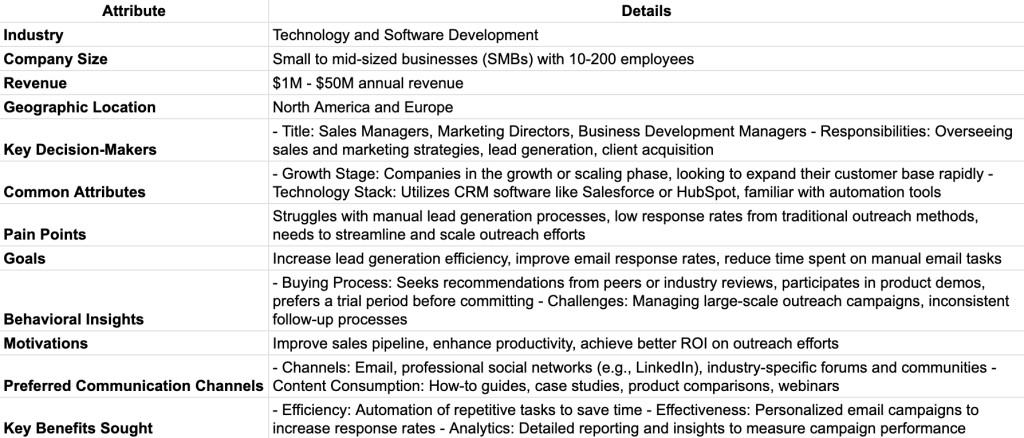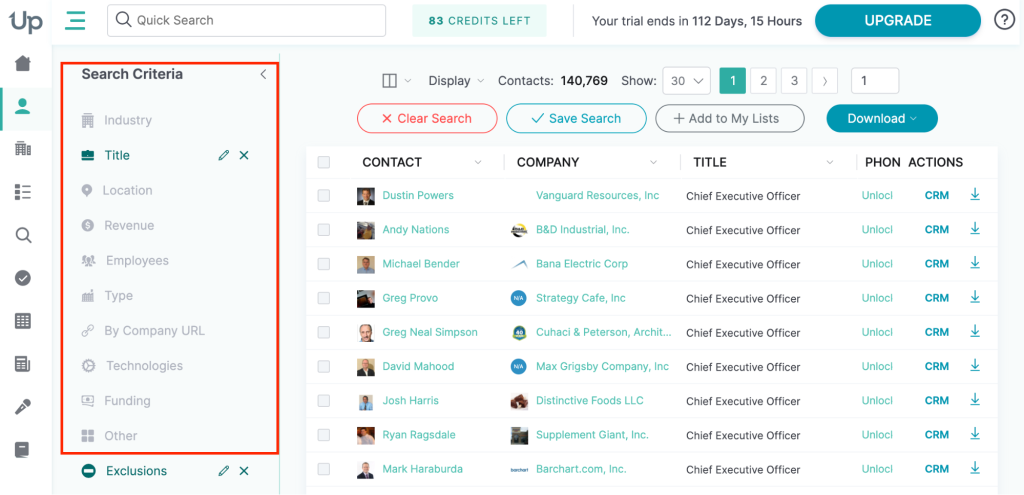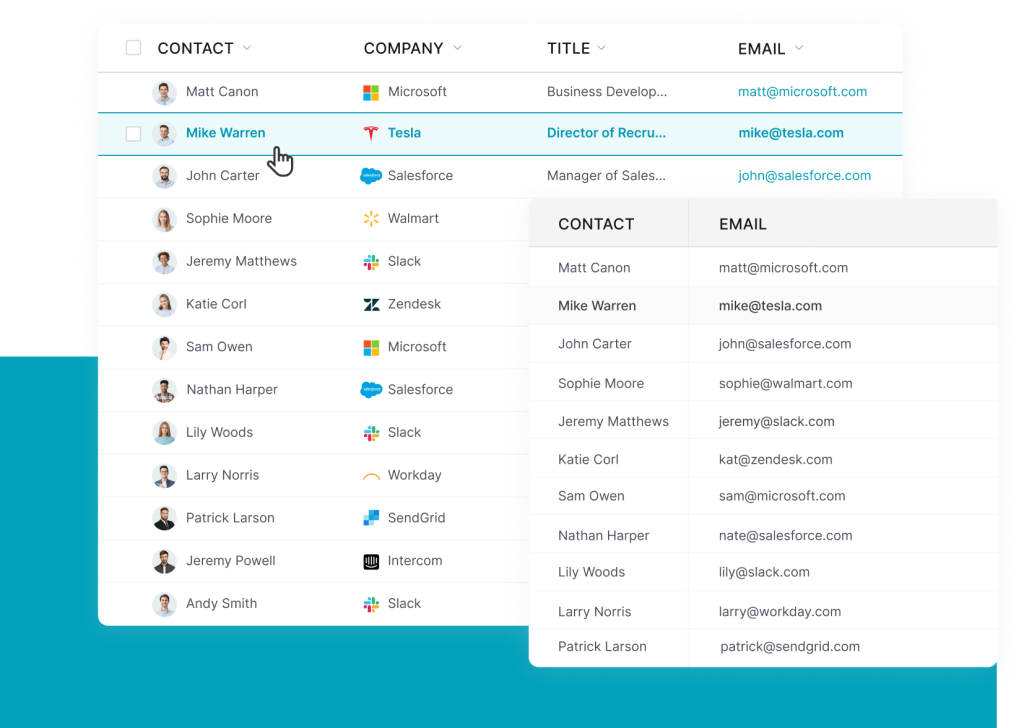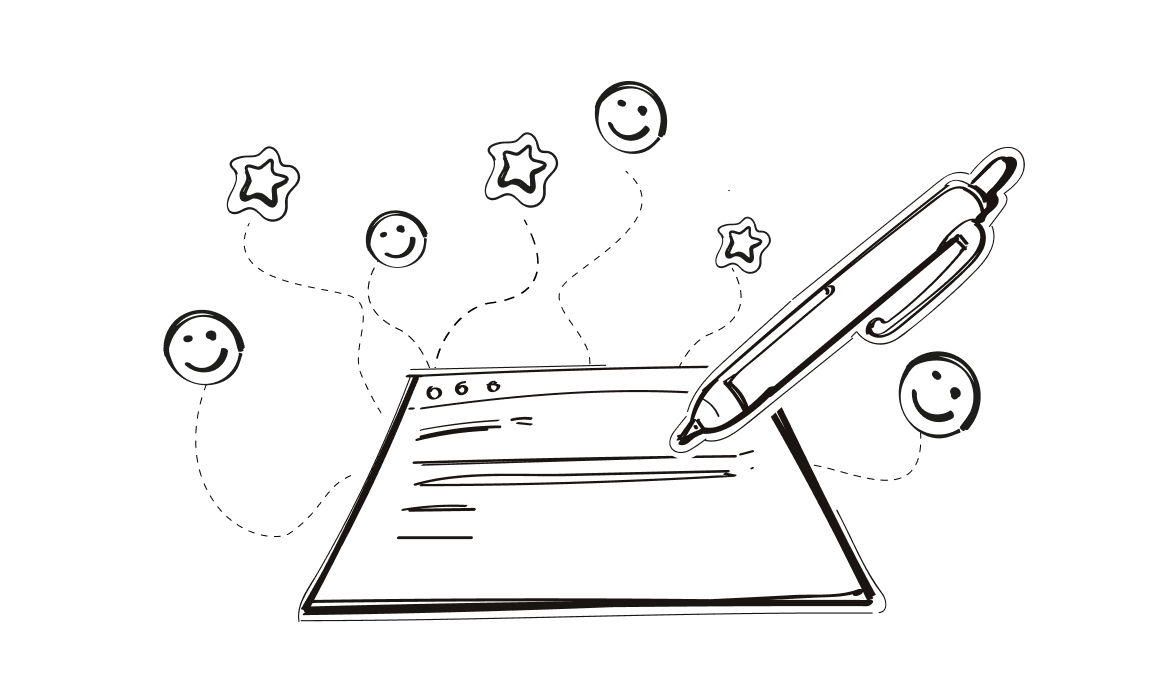Having trouble grabbing people’s interest? Personalized outreach at scale could help you reach many people at once, with ease.
Why do it? 80% of consumers expect personalized experiences now. A one-size-fits-all approach doesn’t cut it anymore. Personalization builds stronger connections, boosts engagement, and maximizes conversions.
Sounds good? This guide covers the full personalized outreach process. You’ll learn data strategies, content tactics, and automation tools. Everything to execute personalized marketing in large quantities.
What is personalized outreach?
Personalized outreach means connecting with someone in a way that feels tailored just for them. This method involves customizing your message to fit the recipient’s interests, needs, or past behavior. The goal is to make your communication feel unique and relevant.
For example, imagine you’re a sales rep. Instead of sending a generic email to a potential customer, sales reps refer to their recent activities or interests.
“Hi Jane, I saw you attend our webinar on digital marketing last week. I thought you might be interested in our latest ebook on advanced social media strategies.”
In another scenario, a nonprofit organization reaches out to past donors. They might say,
“Hi John, thank you for your generous donation last year. Your support helped us launch three new community programs. We’d love to share more updates with you.”
Here’s yet another awesome example of a collaboration proposal:

Personalized outreach isn’t limited to emails. Social media platforms are another powerful tool. Suppose you’re a recruiter. You notice a LinkedIn user frequently engages with posts about remote work. You could message them.
“Hi Alex, I saw your interest in remote work. We have a few remote positions that might be a great fit for you.”
There are many ways to personalize emails. Use the recipient’s name, tweak your subject lines, mention specific interests, or refer to past interactions. Keep your tone friendly and professional. Show that you’ve done your homework and genuinely care about connecting with them.
The key to successful personalized outreach is relevance. Your message must align with the recipient’s interests and needs. Such an approach can boost engagement and build stronger relationships.
Types of personalization
Personalization tactics come in different forms. Let’s look at three types: behavioral, temporal, and contextual.
Behavioral personalization tailors messages based on someone’s actions. For example, if a user often browses running shoes on a website, they might get an email saying,
“Hi Sarah, we noticed you’ve been looking at our new running shoe collection. Here’s a 10% discount on your next purchase. Happy running!”
Temporal personalization uses timing to make messages more relevant. For instance, a coffee shop app might send a push notification at 8 a.m.
“Good morning, Tom! Start your day with a fresh latte. Here’s a 20% off coupon for your next order.”
Contextual personalization adapts messages to the current situation or location of the user. An example would be a weather app sending an alert:
“Hey Jessica, it’s going to rain in your area this afternoon. Don’t forget your umbrella! Check out our tips on staying dry.”
Each type of personalization makes the user feel seen and valued. Behavioral personalization looks at what the user has done in the past to make sure the message fits their interests.
With temporal personalization, the message is more likely to be acted upon because it arrives at the right moment. Contextual personalization considers the user’s current environment, making the message timely and practical.
To use these effectively, you must gather user behavior, preferences, and context data. Tools like analytics platforms and customer relationship management (CRM) systems can help. Always respect privacy and use data responsibly.
Incorporating these types of personalizations can increase engagement, satisfaction, and loyalty. Tailor your approach to fit each user’s unique context and make your communication stand out.
After learning about personalized outreach, you may be wondering, “How do I do it on a large scale?” We’ve got you covered with six steps to successful outreach at scale.
Key steps to personalized outreach at scale
Let’s get into the nitty-gritty details of personalized outreach.
Step 1: Find your ideal customer profile
Finding your ideal customer profile (ICP) is needed to target your marketing efforts and drive business growth. Here’s how to identify your ICP:
Find your power users
Start by analyzing your current customers. Focus on those who derive the most value from your product or service.
These super users are typically the ones who frequently engage with your offerings, provide positive feedback, and have a high lifetime value. Look at common characteristics like industry, company size, and purchasing behavior.
Gather data
Collect both quantitative and qualitative data. Use tools like your CRM to gather insights on revenue, location, team size, and buying patterns.
Additionally, interview your best customers to understand their buying processes, motivations, and pain points. Ask them how they found your product, why they chose it, and how it benefits them.
Analyze the data
Look for patterns and commonalities in the data you’ve collected. Identify shared characteristics among your super users, such as industry trends, company size, geographic location, and specific challenges they face.
This analysis helps you understand what makes these customers ideal and how they align with your business goals.
Create your ideal customer profile
Compile your findings into a clear, detailed document. Include key attributes like industry, revenue, and needs or pain points. Describe the decision-makers within these organizations and their roles. Such a document serves as a blueprint for your marketing and sales team.
Test and refine
Your ICP isn’t static. Review and update it regularly based on new data and market trends. Test your profile by targeting campaigns toward these ideal customers and measuring the outcomes. Adjust it as needed to better reflect your evolving business and market conditions.
Here’s what an example ICP for a cold email software company might look like:

Step 2: Collect data and enrich it
You need as much data as you can get for successful personalized outreach at scale.
We suggest you leverage the native integration between Woodpecker and Uplead. This combination makes gathering and improving data easier, ensuring that your messages are relevant and have the desired effect.
Set up your Uplead and Woodpecker integration

Log into your Uplead account. Navigate to your profile settings and select “Connect to my CRM.” Choose Woodpecker from the menu and press “connect.” Enter your API key from your Woodpecker account to establish the connection.

Collect data with Uplead
Use Uplead to build a high-quality prospect list. Uplead allows you to search based on over 50 criteria, such as industry, job title, location, and company size.
To do this, simply select the criteria on the left-hand side, and the results will appear immediately.

This precision helps you find the right contacts quickly. Additionally, Uplead verifies email addresses in real time, so you only get valid contact information.
Import contacts to Woodpecker
Once you have your prospect list, import these contacts directly into Woodpecker. Use the native integration to transfer contacts effortlessly. More information on importing lists to Woodpecker can be found here.
Enrich data with Uplead

Use Uplead’s enrichment features to improve the information you have about your prospects. Gather additional details like social media profiles, recent activities, and company insights. This enriched data helps you craft highly personalized messages that resonate with your prospects.
Analyze and segment your data
In Woodpecker, analyze your imported data. Segment your contacts based on their attributes and behaviors. For example, group them by industry, job title, or recent interactions. This segmentation allows you to tailor your outreach more effectively.
Now you have rich, complete data about each prospect, ready for personalization. You can move on to the next step, which is ongoing monitoring of prospect behavior.
Step 3: Monitor prospect behavior
To boost your sales, you need to keep a close eye on how prospects behave. Use user behavior analytics tools like Google Analytics, Hotjar, or Crazy Egg. Here’s how and why to do it:
First, track when prospects land on your website. It shows what brought them there. Was it an email, a social media post, or an ad? Knowing that helps you understand which channels are working.
Next, pay attention to what emails they open and click. Email tracking tools like Yesware or Mailchimp show such data. You see what subjects grab their attention. You know which links they find interesting. This information helps you tailor your future emails to be more engaging.
Watch for the points where prospects sign up for free trials. This is a key moment in their journey. Tools like Mixpanel or Pendo can track these actions. When that happens, try suggesting a specific feature, a discount, or a strong call-to-action.
Finally, monitor when they convert to customers. It is the ultimate goal. Look at what actions they took before buying. Did they visit the pricing page multiple times? Did they download a whitepaper? Tools like HubSpot or Kissmetrics can help you track these conversions.
By analyzing these behaviors, you see what works and what doesn’t. You adjust your strategies based on real data and make informed decisions that drive results.
Use these insights to optimize your website, emails, and overall strategy. Always test different approaches. See what gets the best response. Monitoring prospect behavior isn’t just about collecting data. It’s about using that data to improve your sales process and driving more conversions. Keep tweaking and refining your approach to stay ahead.
Step 4: Send personalized messages
Sending personalized messages can transform your email outreach. Here’s how and why to do it effectively:
Use custom fields to personalize your emails. Tools like Woodpecker help you do this. Instead of just using the recipient’s first name and company, you can add specific details that make your email stand out. For example, mention where you found the prospect, refer to their recent blog post, or highlight something specific about their company. Custom fields can include:
- First name
- Company name
- Job title
- Industry
- Specific achievements or projects
- Location
- Pain points

Personalized emails show that you took the time to understand the recipient.
This increases the chance they’ll engage with your message. When emails look and feel unique, they have a higher chance of being read and responded to. Personalization also improves deliverability rates. Emails with high-level personalization are less likely to be flagged as spam because they don’t look like bulk messages.
Here’s what to include:
- Recipient’s name and company: Basic but crucial.
- Source of contact: Mention where you found their details. For example, “I saw your recent post on LinkedIn about sales strategies.”
- Specific interests or achievements: Highlight something unique about the recipient. “I noticed your company recently won an award for innovation.”
- Relevant personalized content: Refer to their work, like a blog post they wrote. “Your article on email marketing was insightful.”
- Reason for reaching out: Be clear about why you’re contacting them. “I believe our tool can help improve your outreach efforts.”
Using these elements will make your cold emails feel more genuine. Personalization shows respect for the recipient’s time and increases your chances of building a meaningful connection. Use these strategies to craft emails that stand out and drive better results.
Step 5: Send follow-up messages strategically
Sending follow-up messages strategically can make or break your sales campaign.
Here’s how and why to do it right:
Start by planning your sequence. Use automation tools like Woodpecker to automate follow-ups. Create a series of emails that build on each other. Don’t just remind prospects to reply; add value with each message.
For example, share case studies, relevant articles, or new insights. Schedule the first follow-up two to three days after the initial email. Space out subsequent emails over a week or more to avoid being pushy.
Timing is crucial. Follow up based on the prospect’s previous activity.
If they opened your email but didn’t respond, wait a few days before sending a follow-up. If they clicked a link, mention it in your next email and provide more related content.
Use tracking tools to see when they engage with your emails. Adjust your follow-up timing based on this behavior. You show that you’re attentive and responsive.
Follow-ups are super important because they increase response rates. In fact, B2B prospects need five follow-ups 80% of the time.
Many prospects miss the first email or forget to reply. A well-timed follow-up gives them another chance to respond. Follow-ups also build trust. They show you’re persistent and serious about helping them. Each follow-up adds more context and relevance, making your offer more appealing.
These elements are super important:
- Reminder of the initial email: Briefly mention your first email.
- New value proposition: Add something new, like a case study or an article.
- Call to action: Be clear about what you want them to do next.
- Personalization: Reference any interactions they had with your previous emails.
By following these steps, you create a follow-up strategy that feels natural and respectful. Each follow-up should provide value and encourage engagement.
Keep refining your approach based on what works best for your target audience. You will maximize your chances of turning prospects into customers.
Step 6: Analyze, rinse and repeat
To refine your email campaigns, you need to dive into the analytics. Woodpecker offers several powerful features to help you analyze your outreach efforts and spot areas for improvement.
Start by accessing your Woodpecker dashboard.
Here, you’ll find detailed reports on open rates, click-through rates, reply rates, and bounce rates. Now, you can:
- Look at the total number of recipients and the unique opens to gauge engagement.
- Check the number of clicks to see which links are most effective.
- Review bounce and unsubscribe rates to understand deliverability issues.

Analyzing these metrics helps you understand what’s working and what’s not. High open rates with low click rates? Your subject lines are effective, but your content might need tweaking. Low open rates? Your subject lines might need improvement.
High bounce rates? Your email list might need cleaning. In this way, you can be sure that the changes you make to your campaigns are based on clean data.
Here’s what to look out for:
- Open rates: Indicates interest. A low open rate means your subject lines or timing might be off.
- Click-through rates: Measures engagement with your content. Low rates suggest the content isn’t compelling.
- Reply rates: Shows direct interest and engagement. High reply rates mean your call-to-action is effective.
- Bounce rates: High bounce rates indicate issues with your email list quality.
- Unsubscribe rates: If this is high, your emails might be too frequent or not relevant.
We can’t leave you without some actionable steps:
- Optimize subject lines: If open rates are low, test new subject lines. Make them compelling and relevant.
- Improve content: For low click-through rates, ensure your content is engaging. Use personalized and relevant information.
- Clean email list: High bounce rates? Regularly clean your email list to remove invalid addresses.
- Adjust frequency: High unsubscribe rates suggest you might be emailing too often. Adjust your email frequency accordingly.
Use Woodpecker’s A/B testing feature to test different versions of your emails. Compare results to see what works best.
Also, consider the timing of your emails. Woodpecker’s time zone feature can send emails at optimal times based on where your prospects are located.

Analyzing your campaigns is indispensable. Use the insights to tweak your strategy and improve results continuously.
This rinse-and-repeat process guarantees that your email outreach becomes more effective over time, which drives better engagement and conversions.
Curious about Woodpecker? Start a 7-day free trial!
Stay connected with personalization
Personalized outreach is key for connecting with your audience. This guide covered the full process – from finding your ideal customers to sending tailored emails that grab attention.
To summarize the main points:
- First, identify your ideal customer profile based on data about your best customers.
- Then, collect and enrich prospect data through tools like Uplead.
- Monitor prospect behavior to understand their interests and actions.
- Next, craft personalized emails using details from their data.
- Include specifics that make them feel valued.
- Follow up strategically by providing new value and adjusting timing based on engagement.
- Finally, analyze metrics like open rates, clicks, and replies.
- Use these insights to continuously optimize your subject lines, content, lists, and cadence.
Personalization builds relationships. Generic blasts get ignored. But tailored outreach resonates. It shows you understand prospects’ needs and can solve their problems.
So start segmenting your data, testing approaches, and refining your strategy. Personalized outreach takes work, but the payoff is higher engagement, more conversions, and stronger customer connections. Make your brand stand out by making prospects feel seen.

